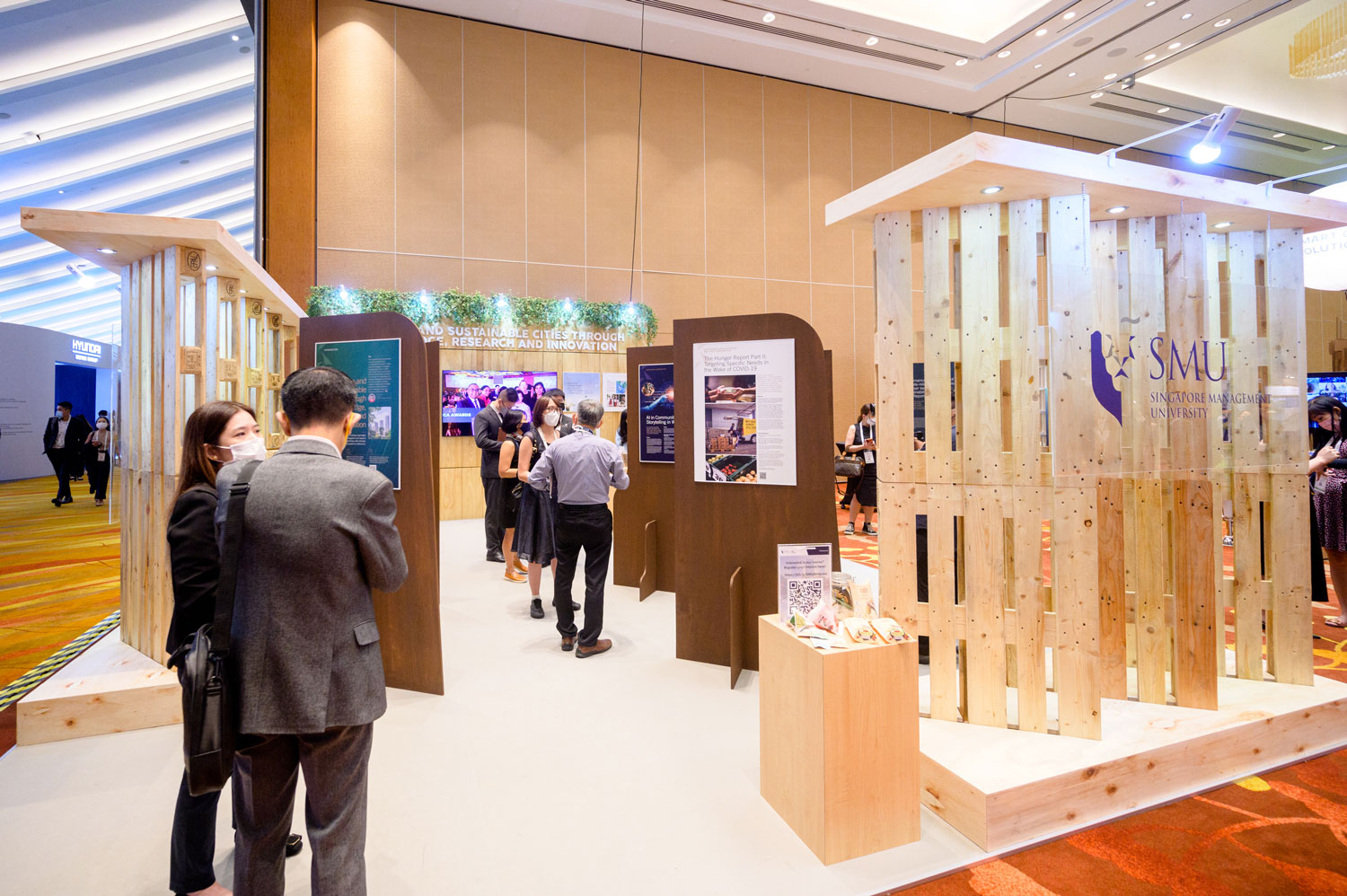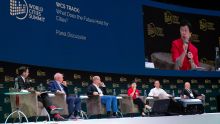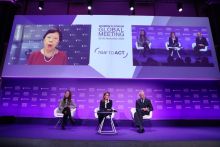
There's no escaping it: we all have a role to play in sustainability. Individuals, businesses and governments all need to do their part if we're going to avert the most catastrophic effects of climate change. But what about universities? What role can they play in building sustainability? Turns out, institutions of higher education can make a big difference.
Besides creating a significant impact by reducing their energy consumption, using cleaner energy sources, and implementing energy efficiency measures, universities can also indirectly grow sustainability through their role as an incubator for start-ups and thought leaders. The SMU campus, for example, is fertile ground for the development of new ideas and technologies that can lead to a more sustainable future.
At the eighth edition of the biennial World Cities Summit, recently held at Singapore’s Marina Bay Sands, SMU alumni and faculty shared ground-breaking technologies and solutions to government and industry leaders, urban solution experts and impact investors at a dedicated pop-up platform.
Returning to an in-person conference format this year, the Summit convened leading experts from around the world to address liveable and sustainable city challenges, integrate urban solutions and forge new partnerships.
Building a sustainable Singapore
As we suffer from the twin whammy of scorching heat and melting humidity (sometimes offset by the fun of the monsoon storms), we can take a bit of comfort in knowing that a group of dedicated researchers is out there, pounding Singapore’s streets and dragging a smart-tech-packed machine, all to study the exact factors that make our country so particularly hot and humid.
Led by SMU Associate Professor of Urban Climate Winston Chow, Cooling Singapore is a multi-institutional and multi-disciplinary research project launched in 2017, with funding from the Singapore government. Aiming to enable policymakers to analyse the effectiveness of various heat mitigation measures, it has highlighted simple factors important to tropical architecture and urban planning, such as planting more shade trees and ensuring that city designs incorporate more opportunities for breezes, and for heat to radiate away from offices and homes.
This was one of multiple initiatives that demonstrate the University’s research capabilities in creating liveable and sustainable cities It has five main research pillars of sustainability: Business operations, urban infrastructure, finance, agro-business and communities.
Visitors to the booth discovered about SMU research projects such as the CUDO (Collaborative Urban Development Optimisation) logistics platform by the Fujitsu-SMU Urban Computing and Engineering Corp. Lab in collaboration with the Infocomm Media Authority of Singapore. Led by SMU Professor of Computer Science Lau Hoong Chuin, it works on the problem for deliveries and congestions in the tightly packed city landscape. Other projects in the related area included smart charging of electric vehicles, and the new taxi Driver Guidance System.
Sustaining communities were highlighted by the SMU’s Lien Centre for Social Innovation and its two-part The Hunger Report, partnered with The Food Bank Singapore. Research by the joint team lead by Dr Dalvin Sidhu, was coupled with active outreach, to learn about how those who suffer from food insecurity spent their money. As part of the project, the team provide food support for two months for participants.
Furthering the community outlook, another research spearheaded by SMU’s Centre for AI & Data Governance showed how public perception of AI could be turned towards greater trust and understanding, and thus build stronger bonds through technology.
Financing a sustainable future
As money underpins everything in life, sustainable finance isn’t just a curiosity: SMU’s Associate Professor of Accounting Holly Yang’s research showed that local manufacturing plants could be nudged in the direction of reducing emissions, when other peers started publicly doing so. And her colleague Associate Professor of Finance and Co-Director, Singapore Green Finance Centre Liang Hao, introduced a standardised framework with which companies in the region could measure and report – in terms of money – how what they do impacts both the society they operate in, and their effect on the environment.
It’s no secret, too, that universities are hubs of environmentalism and sustainability. From energy efficiency programs to campus-wide composting initiatives, schools are finding creative ways to reduce their environmental impact. But what about the physical buildings themselves?
The recently unveiled SMU Connexion is a zero-energy structure, which has received the Green Mark Platinum award by the Building and Construction Authority for being a best-in-class, energy efficient building. The University’s booth paid tribute to the iconic structure, with a main façade constructed from Accoya wood (a BCA-approved laminated product) left over from the façade of SMU Connexion. And after teardown of the booth, the material was carefully brought back to campus to be stored for its next appearance. Wood pallets from deliveries were also reused in the booth construction as a latticework that allowed more light into the booth.
Highlighting sustainable products by SMU alumni
While the prospect of edible insects are still non-starters for most of us (no matter how “green” an ingredient it may be), it’s easier to consume more familiar proteins like fish and chicken, which feed on insects. Insect Feed Technologies’ CEO Sean Tan, SMU Bachelor of Business Management 2018, one of the four SMU alumni whose companies were highlighted, explained that the insects – black soldier flies – were processed to produce feed for animals; oils that could be used in pharmaceutical and beauty industries; and plant fertiliser.
Another highlight was NEWBitumen – a road-making product made from recycled plastics produced by Magorium. The company’s CEO, Oh Chu Xian, SMU BBM 2021, was born into a family whose business was construction. She then infused her desire to reduce single-use plastic waste into a construction necessity: bitumen for roads. NEWBitumen has already been used in a carpark in Tuas, and a carpark and driveway in Marymount. It has also been used in the driveway around the new DBS Newton Green.
Similarly, single-use plastic waste was tackled by Jeremy Lee, SMU BScIS 2018. He had started out creating UglyGood, with fellow alumnus Clewyn Puah, which focused on reducing food waste by upcycling. Then his next project was to reduce single-use bottles in cleaning supplies – by dehydrating detergent into powders and packaging those in paper. His company now offers detergent, food-grade sanitisers and insect repellent.
Lastly comes the delicious finale of Crunch Cutlery, by Anna Lam, SMU Law 2015. While “stuck” at home during various lockdowns due to COVID-19, she baked and began thinking about using her baked goods as disposable, edible cutlery – an existing concept. With a good deal more baking and tasting (and research), she and her co-founder, Sean Neo from Singapore University of Social Sciences, came up with three ranges of cutlery – normal, fruit-flavoured for children, and healthy flavours for fitness fanatics who need disposable cutlery.


